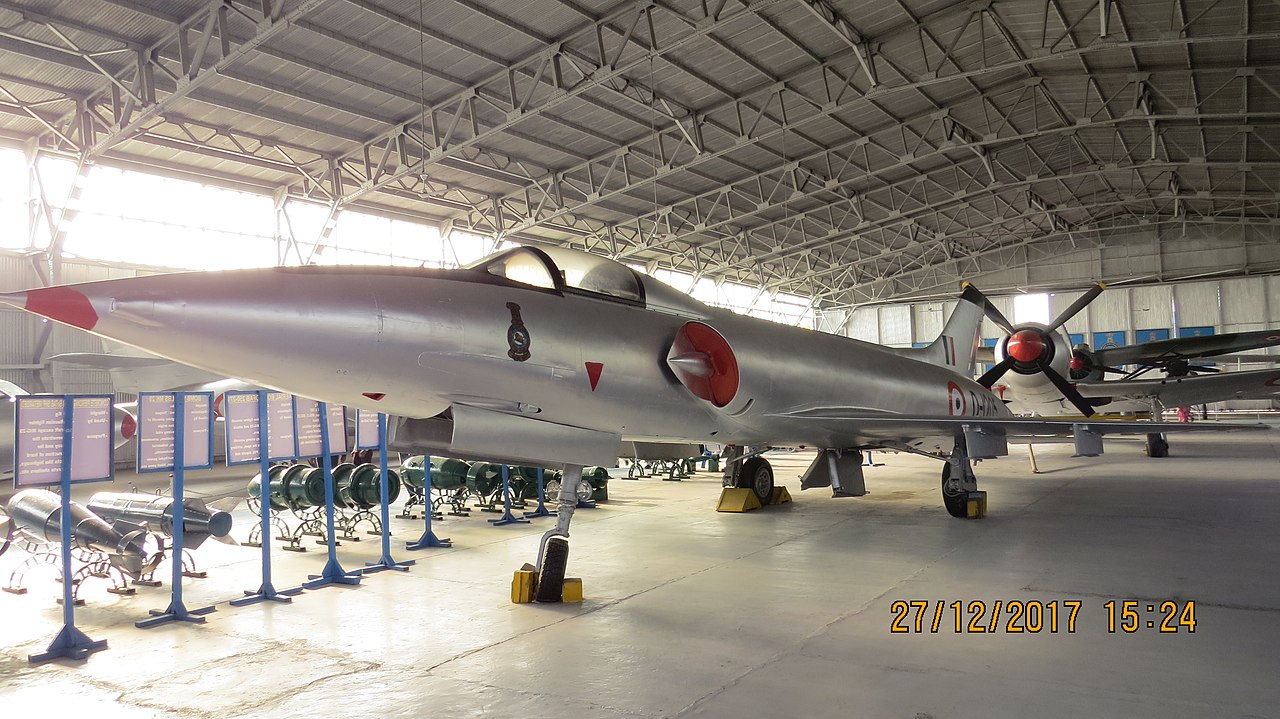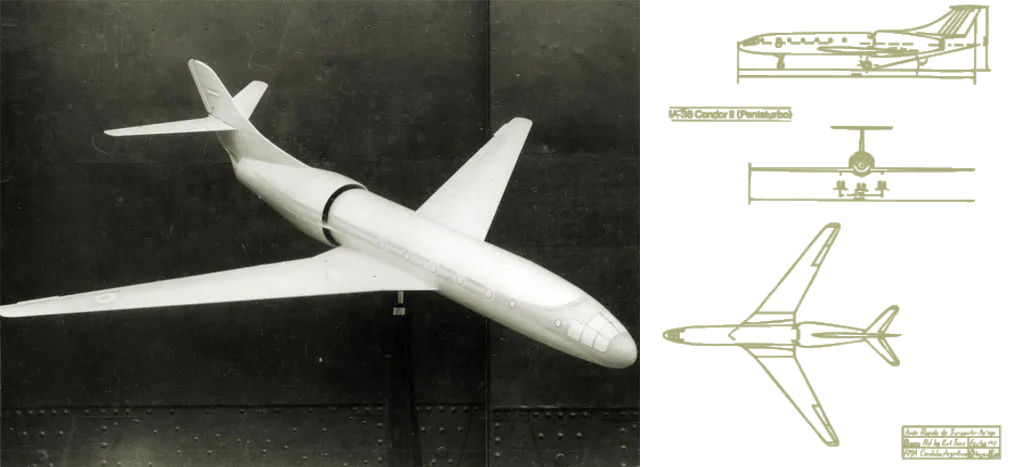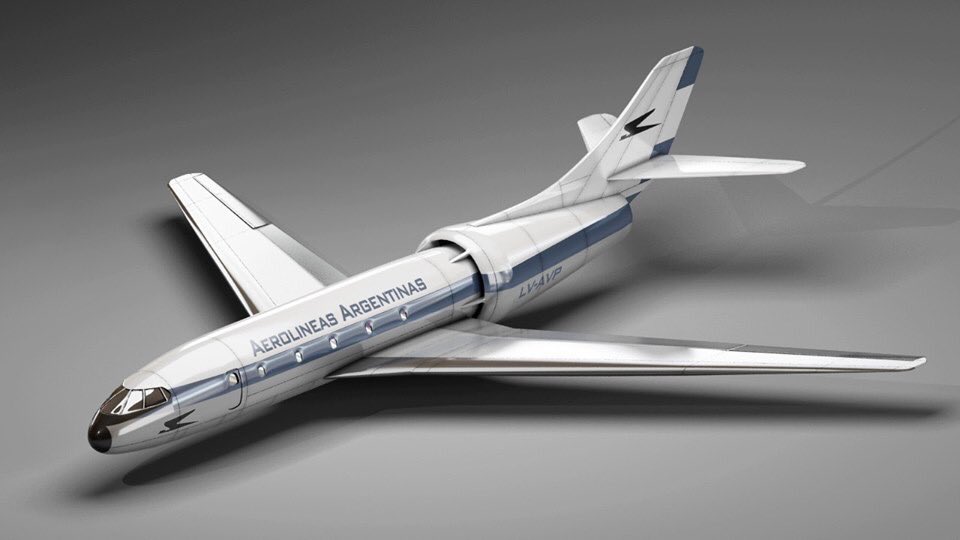A little-known experimental aircraft project from South America, with a one-of-a-kind unusual design, would have gone on to become one of the most revolutionary commercial jets in aviation history had it not become a casualty of geopolitical rivalry. The project never even entered a prototype production stage.
Argentina’s Fábrica Militar de Aviones (FMA) IA 36 Condor had an unorthodox engine placement and intake configuration: five Rolls Royce Nene II turbojets wrapped around in an outer airframe of the main fuselage.
Born in the 1950s, post World War 2 ‘jet age,’ passenger and military aircraft emerged with the new generation of fire-breathing engines. It also shares a certain part of its history with India.
Like India’s Hindustan Aeronautics Limited (HAL) HF-24 Marut, it was also designed by legendary WW2 aircraft designer Kurt Tank. But Condor was even more unfortunate, with only one wooden mock-up made before political instability in Argentina forced Tank to leave the country.
It has, therefore, become imperative to revisit this forgotten saga in aviation history.

Origins & Design
Work commenced on the Condor in late-951 at the FMA factory in Cordoba, and by 1953, a 1:34 scale wind tunnel model was built. Designers also constructed a mock-up of the fuselage made of wood.
The Condor had five jet engines placed in an annular configuration in the rear fuselage. The air intake was placed in a ring-like shape around the circumference of the rear fuselage. This made it aerodynamically smoother and faster, as it offered less ‘drag’ owing to the absence of outward, protruding jet engines slung under the wings.
It could carry between 38 to 41 passengers, envisaged as an intra-continental airliner able to connect the major cities of South America from Argentina.

The design was exceptionally unusual, yet not bizarre. Some of today’s cruise missiles, like the BGM-109 Tomahawk, have air intake as an opening in the rear fuselage without a protruding duct.
Even India’s own BrahMos is based on a similar principle. The pointed section holding the seeker and the guidance avionics is encased inside another tubular body, where a gap between the two serves as the air intake. The Condor is simply this shroud moved even further back. It had a wingspan of 34 meters or 111.5 feet, with steeply angled arrow wings.
There are three publicly available images of the plane. The official wind tunnel model showed a cockpit design with windshield glass both overhead and the side of the front nose section, much like the Messerschmitt Me 264, the Heinkel He 111, or the American B-29 Superfortress with a cruciform-shaped tail.
Other illustrations showed the plane sporting a front-only windshield cockpit. A third image possibly leaked blueprint designs, showed the original cockpit design but with a ‘t-tail’ configuration.
This wing design was believed to enhance performance and economy while in flight at high speeds. Kurt Tank’s team estimated the plane to touch speeds of 950 kilometers an hour and a 5,000 km range, perfect for flights between Buenos Aires, Lima (Peru), or Sao Paulo (Brazil).
The Condor’s design, however, did suggest some design flaws, primarily about passenger safety. Passengers would have been seated just ahead of a battery of five engines, possibly entailing deafening noise and severe discomfort.
The exact internal design features and passenger customization were unknown due to the little information about the project. However, the stated operational purpose aligned with its design, envisaged as a mid-range intra-continental airliner that could carry 38 to 41 persons seated in a single aisle configuration.

Reasons For Demise
The cause behind the project’s cancellation also has a significant geopolitical motivation, given the ideologically driven Cold War-era period in which it was pursued. The government of President Juan Peron adopted economic, industrial, trade, and diplomatic policies that contradicted the United States.
The admittedly Socialist and pro-labour Peron restored diplomatic relations with the Soviet Union; promoted massive worker unionization; nationalized the Central Bank, railways, universities, public utilities, and merchant marine; paid off the billion-dollar debt to the Bank of England; universalized healthcare; extended social security to 70 percent of the population between 1946 to 1951; brought in minimum wage laws; and, finally set price controls on food and essential items.
He was finally overthrown in an uprising on June 16, 1955, by the Argentine Army, Navy, and Air Force. The new government of Pedro Eugenio Aramburu then canceled the project in 1958.
Kurt Tank Comes to India
Even more ironic is the fate of Kurt Tank. Out of a job, Tank soon left the country and then arrived in India, while the rest of the Focke Wulf team dispersed elsewhere in other parts of the world.
Tank then went on to design the Hindustan Aeronautics Limited (HAL) HF-24 Marut. That project was short-lived, primarily due to the absence of a suitable engine and poor political, bureaucratic, and military coordination.
The Marut nevertheless saw a two-decade service between 1967 and 1990 while also participating in the 1971 Indo-Pak War. The Condor was not that lucky.
Tank remained a pioneering aeronautical designer, famous for legendary World War 2 Luftwaffe aircraft like the Focke Wulf Fw 190 fighter and the Ta 152 fighter interceptor.
After the Marut project, Tank was reported to have eventually moved back to the then-West Germany (Federal Republic of Germany or FDR) by the 1970s. He was a consultant with leading WW2-era German aircraft manufacturer Messerschmitt-Bölkow-Blohm (MBB).
Political & Strategic Promise
Had the project proceeded, the Condor would have put Latin America on the global aerospace map, being the first full-scale aircraft designed and built on the continent. It is a different matter that Brazil’s Embraer is no less an established aviation firm today.
However, given Argentina’s military history (after it clashed with the United Kingdom over the Falklands Islands in 1983), the project could have been used for multiple military applications.
These could have comprised airborne warning and control systems (AWACS), reconnaissance, or other special mission aircraft. Even if it had been operationally impractical, the plane could have always been used as a test bed for various aviation technologies, such as materials, avionics, or engines.
The EurAsian Times had reported about the Soviet Union’s planned DSB-LK ‘Darkstar’ hypersonic strategic bomber in the 1950s, which didn’t even get off the drawing board. Part of the reason was the advent of intercontinental ballistic missiles (ICBM) that would perform most roles envisaged for a long-range strategic bomber.
However, as subsequent reports point out, following the project’s shelving, the purpose of the effort was purely research and academic, “meant to develop tactical and technical properties of aircraft, seaplanes, cruise missiles, and aircraft-to-aircraft projectile systems.”





















